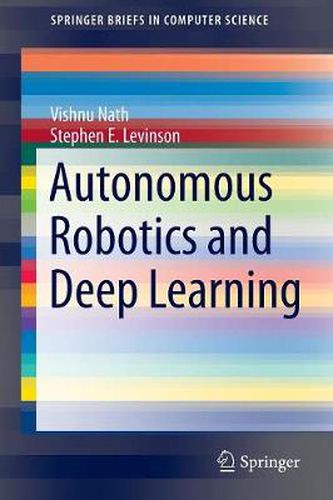Readings Newsletter
Become a Readings Member to make your shopping experience even easier.
Sign in or sign up for free!
You’re not far away from qualifying for FREE standard shipping within Australia
You’ve qualified for FREE standard shipping within Australia
The cart is loading…






This title is printed to order. This book may have been self-published. If so, we cannot guarantee the quality of the content. In the main most books will have gone through the editing process however some may not. We therefore suggest that you be aware of this before ordering this book. If in doubt check either the author or publisher’s details as we are unable to accept any returns unless they are faulty. Please contact us if you have any questions.
This Springer Brief examines the combination of computer vision techniques and machine learning algorithms necessary for humanoid robots to develop true consciousness. It illustrates the critical first step towards reaching deep learning, long considered the holy grail for machine learning scientists worldwide. Using the example of the iCub, a humanoid robot which learns to solve 3D mazes, the book explores the challenges to create a robot that can perceive its own surroundings. Rather than relying solely on human programming, the robot uses physical touch to develop a neural map of its environment and learns to change the environment for its own benefit. These techniques allow the iCub to accurately solve any maze, if a solution exists, within a few iterations. With clear analysis of the iCub experiments and its results, this Springer Brief is ideal for advanced level students, researchers and professionals focused on computer vision, AI and machine learning.
$9.00 standard shipping within Australia
FREE standard shipping within Australia for orders over $100.00
Express & International shipping calculated at checkout
This title is printed to order. This book may have been self-published. If so, we cannot guarantee the quality of the content. In the main most books will have gone through the editing process however some may not. We therefore suggest that you be aware of this before ordering this book. If in doubt check either the author or publisher’s details as we are unable to accept any returns unless they are faulty. Please contact us if you have any questions.
This Springer Brief examines the combination of computer vision techniques and machine learning algorithms necessary for humanoid robots to develop true consciousness. It illustrates the critical first step towards reaching deep learning, long considered the holy grail for machine learning scientists worldwide. Using the example of the iCub, a humanoid robot which learns to solve 3D mazes, the book explores the challenges to create a robot that can perceive its own surroundings. Rather than relying solely on human programming, the robot uses physical touch to develop a neural map of its environment and learns to change the environment for its own benefit. These techniques allow the iCub to accurately solve any maze, if a solution exists, within a few iterations. With clear analysis of the iCub experiments and its results, this Springer Brief is ideal for advanced level students, researchers and professionals focused on computer vision, AI and machine learning.